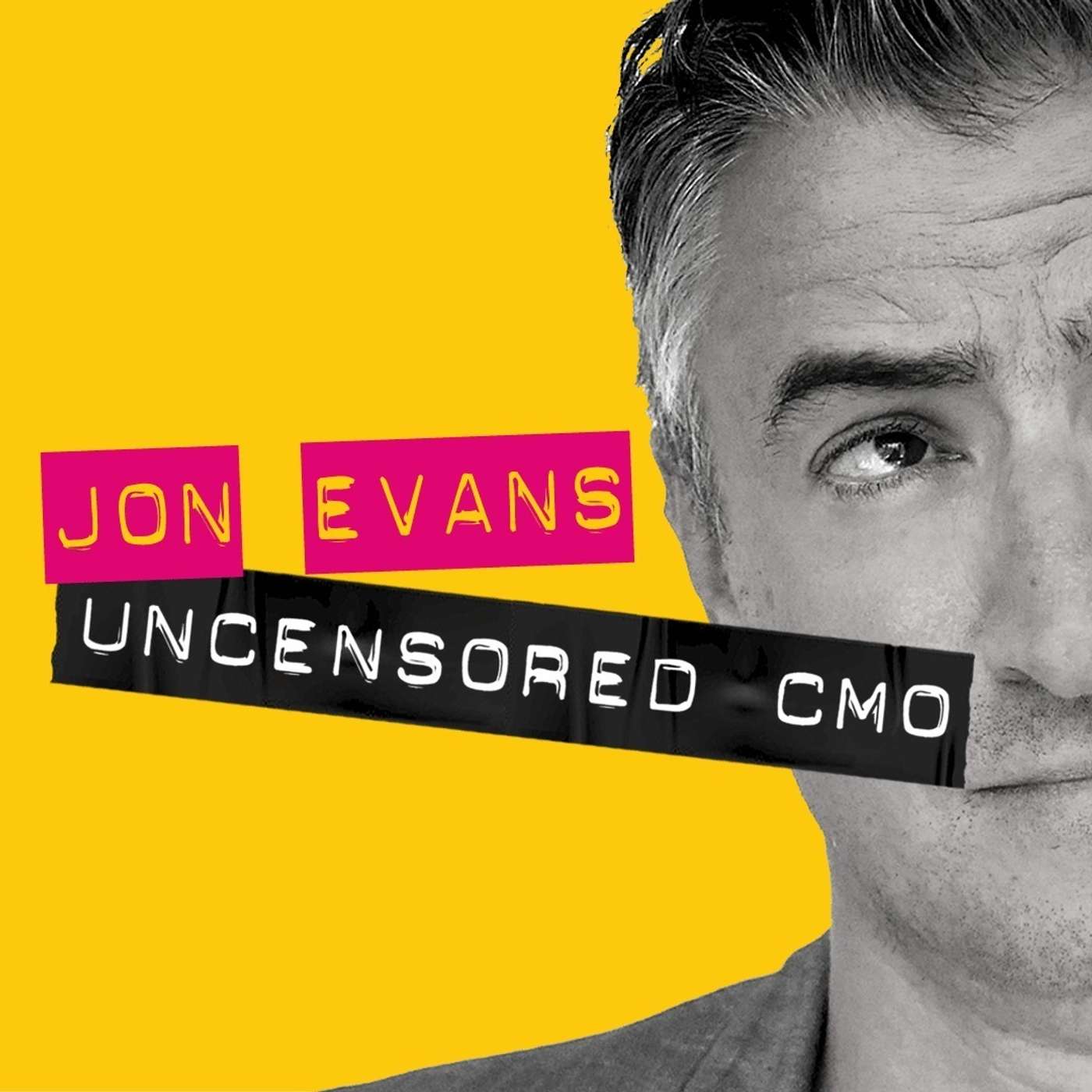
The Looking Glass
“The truth stands in the looking glass, waiting for those brave enough to look it in the eye.”
The Looking Glass
Make Your Brand Strategy Two Things: Make It True And Make It New
This episode argues that successful brands must effectively blend the truth with the new. "Truth" represents authenticity, values, and reliability, forming the foundation of consumer trust and loyalty. However, it emphasizes that truth alone can lead to stagnation, making "newness" crucial for engagement and relevance. "Newness" involves innovation, fresh storytelling, and captivating campaigns that grab attention and maintain interest. It concludes that true brand success comes from a harmonious balance between these two elements, preventing a brand from becoming either stale or a mere gimmick.
Welcome to this deep dive. Today, we're really digging into what makes certain brands stick around, not just successful for a bit, but truly enduring. unforgettable, even in this, well, incredibly crowded marketplace. Our insights today, they come from some really fascinating excerpts on the truth and novelty of enduring brands. And our mission really is to unpack that delicate balance, you know, the one that defines these lasting brands. We want to help you understand how some just managed to rise above all the noise and genuinely connect with people. So get ready. It seems to boil down to two core things, often contradictory ingredients, actually. Okay. So diving right in, the source material, it kicks off with this really interesting paradox. It says that being true is what earns trust. Makes sense. And being new, well, that's what grabs attention, what earns views. But here's the kicker, right? It warns that getting both right consistently, that's incredibly hard. Apparently, most brands lean too heavily one way and the other just kind of dies on the vine.
SPEAKER_01:Yeah. And what's so insightful about that, I think, is how it immediately flags that inherent tension. It's not about picking one, truth or newness. It's about mastering both at the same time and And well, as the analysis shows pretty clearly, that's not an easy dance for most brands to keep up long term.
SPEAKER_00:Right. That makes perfect sense. So let's focus on truth first. When the material says a brand is true, it's got to be more than just, I don't know, listing ingredients, right? What's the deeper meaning there?
SPEAKER_01:Oh, absolutely. When we talk about a brand's truth, we mean it's grounded in something real. That could be core values, maybe authentic experiences it offers, or just qualities that genuinely resonate with actual people. The source really hammers this home. Authenticity isn't some nice to have extra. It's the bare minimum. It means truly backing up your claims, things like sustainability or social impact. And it specifically warns against greenwashing, you know, faking eco-credentials or virtue signaling, just looking good without real commitment. People are smart these days. They see right through that. Faster than you can write a mission statement, probably. But when a brand's actions actually line up with its words consistently, that's when belief starts to turn into real deep loyalty.
SPEAKER_00:Okay, so that's the foundation. Absolutely critical. But then the source throws in this curveball that says truth isn't sexy on its own. People want to believe, yeah, but they also want something, I don't know, fresh. Something to talk about.
SPEAKER_01:That's exactly the challenge, isn't it? The reality is a brand can be totally authentic, totally true. But if it's just boring, nobody's going to care. So new isn't about constantly reinventing everything from scratch. It's more about reframing it in a way that gets people excited. And novelty. It grabs that initial attention. Crucial. And maybe even more importantly, it keeps people engaged over time. This newness could be real product innovation, sure. Or maybe a fresh story, a bold marketing campaign that feels relevant right now, or even a whole new way of doing business or connecting with customers. The real trick, though, as the insights highlight, is making it feel different without losing that core authenticity. Think about it like a natural product brand. Just being natural isn't enough when there are a million others, right? It needs that unique angle, something novel to make it stand out.
SPEAKER_00:So this balance, it sounds absolutely vital. What happens then, according to the source, if a brand messes up, leans too hard one way or the other? Are there specific dangers?
SPEAKER_01:Oh, yeah. The source is crystal clear about the pitfalls of imbalance. Brands that are too true but lack that spark of newness. They tend to feel dependable but uninspired. They become, and I love this analogy from the material, the brand equivalent of oatmeal.
SPEAKER_02:Oatmeal.
SPEAKER_01:Wholesome, fine,
SPEAKER_02:but
SPEAKER_01:who's rushing to share their oatmeal on Instagram, you know, they just fade away. Then on the other side, you have brands that are too new but lack that grounding and truth. They come off as flashy but fake. They might get a burst of attention, grab headlines for a minute. But as the insights show, people quickly realize there's nothing behind the curtain and they just fizzle out, become trends, not staples. The sweet spot, it's described perfectly as that balance. Something real enough to be trusted, but fresh enough to be noticed.
SPEAKER_00:That oatmeal analogy really sticks with you. But hang on. Couldn't some brands, maybe in more conservative fields like finance or healthcare, couldn't they actually benefit from being seen as dependable, almost unsexy? Does new always have to mean exciting, like a movie trailer, even for them?
SPEAKER_01:That's a really good point, and it gets to the nuance, doesn't it? For those kinds of industries, new probably doesn't mean flashy ads. It could mean, say, new levels of transparency that's novel, or maybe a new approach to customer service that feels really different or innovative ways to make complex stuff simple for people.
SPEAKER_00:So the goal isn't always like overt excitement. It's more about renewed relevance, differentiation. It still needs to be noticed for being a fresh take on an old problem, even if it's not traditionally sexy.
SPEAKER_01:OK, that clarifies things. It makes perfect sense. Yeah. And thankfully, the source doesn't just point out the problem, this balancing act. It actually gives us a formula, a way to achieve it. Let's break down those four pillars.
SPEAKER_00:Right. So first up, know your truth. And this isn't just about what you wish your brand was it's about digging deep what makes your brand actually valuable Authenticity, like we said, it comes from really knowing your strengths, yes, but also being honest about flaws. Owning your story. The material puts it pretty bluntly. People can smell bulst a mile away.
SPEAKER_01:Yeah, they do. So don't try to be everything. Focus on what's genuinely real about your brand. Second step, find your new. This means you've got to look really closely at the market and truly listen to your audience. What's missing out there? What are people actually craving that nobody's delivering well right now? And remember, your new doesn't have to be some world-changing invention. It just needs to be surprising enough or exciting enough to make people pause their scrolling and actually pay attention.
SPEAKER_00:Okay. Know your truth. Find your new. What's third?
SPEAKER_01:Third is blend. Don't bolt on. What this means is your truth and your newness. They shouldn't feel like separate things just kind of tacked together. They need to be woven seamlessly into the fabric of the brand. Patagonia is the example used, and it's a great one. Their truth is that hardcore environmental commitment. And their innovation their new directly supports and highlights that truth, like using recycled materials for everything, not just, you know, creating one eco product line for marketing.
SPEAKER_00:It's integrated.
SPEAKER_01:Exactly. It's part of who they are, not just something they advertise. And the final pillar, number four, is stay curious. Your core truth. That might be timeless, but what counts as new changes all the time. It evolves constantly. What felt cutting edge five years ago might seem totally stale today. So the brands that really win long term, they adapt. They keep innovating. But crucially, they do it without losing that core essence, that truth. Think about Nike's Just Do It.
SPEAKER_00:Classic.
SPEAKER_01:It's a message. The source says that that's so true. It's practically scripture, right? That universal drive. But they keep it fresh. It's constantly refreshed through new campaigns, collaborations, and technological innovations.
SPEAKER_00:Yeah.
SPEAKER_01:They just keep finding new ways to tell that same timeless truth.
SPEAKER_00:Wow. Seeing that formula laid out like that, it's powerful. And the material gives some great classic examples of brands that really seem to have nailed this balance, the ones dominating their fields.
SPEAKER_01:Yes, exactly. These case studies really make the whole concept click. Take Apple. Their truth. You could say it's sleek design and usability, making tech beautiful and easy to use. Their new, well, that's the constant innovation, isn't it? In products, yes, but also They definitely do. Grounded in that universal aspiration, the truth of wanting to achieve, to push limits. But that truth is constantly reimagined through stories and technology that speak to every generation, always finding fresh angles, new tech.
SPEAKER_00:Yeah. And when you connect that to the bigger picture, it's pretty clear these brands aren't just surviving. They really dominate. Because they've mastered this art, this balance. They're not just following trends. Often they're setting them. And all while staying totally true to who they are at their core.
SPEAKER_01:Exactly right. Which brings up a really important question, I think. Why does this matter so much right now, this whole dance of truth and newness? Why should you, listening, care? Whether you're just trying to understand the market or maybe even building something yourself.
SPEAKER_00:Well, in today's world, this hyper-connected place, our source material really emphasizes that attention is currency. And trust is a scarce resource. That really resonates. It states very plainly, if a brand isn't both genuinely true and genuinely new, it's basically just adding to the noise. Consumers, I mean, you have so many options, overwhelming options. There's just no reason to stick with something that feels, well, half-baked.
SPEAKER_01:That summary from the source is just perfect, isn't it? Your truth is what makes people believe in you your newness is what makes them notice you together they make your brand unforgettable miss one element and you risk just fading out becoming forgettable but nail both then you're not just selling a product you're building something real something that lasts something that truly connects because as the source concludes so well half baked is no cake
SPEAKER_00:so maybe something to think about as you go about your day Think about a brand you really admire. It could be one you use all the time or just one that sticks in your mind. What makes it feel true to you? What makes it feel new? And how does that combination, that specific blend, make it so appealing, so lasting for you?
Podcasts we love
Check out these other fine podcasts recommended by us, not an algorithm.

Uncensored CMO
Jon Evans
On Strategy Showcase
Fergus O’Carroll
HBR On Strategy
Harvard Business Review
